Angiosperms
Flowering Plants
Pam Soltis, Doug Soltis, and Christine Edwards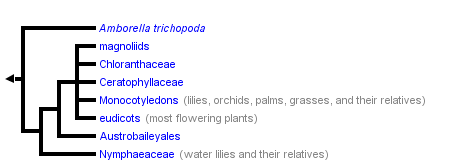


This tree diagram shows the relationships between several groups of organisms.
The root of the current tree connects the organisms featured in this tree to their containing group and the rest of the Tree of Life. The basal branching point in the tree represents the ancestor of the other groups in the tree. This ancestor diversified over time into several descendent subgroups, which are represented as internal nodes and terminal taxa to the right.

You can click on the root to travel down the Tree of Life all the way to the root of all Life, and you can click on the names of descendent subgroups to travel up the Tree of Life all the way to individual species.
For more information on ToL tree formatting, please see Interpreting the Tree or Classification. To learn more about phylogenetic trees, please visit our Phylogenetic Biology pages.
close boxIntroduction
The angiosperms, or flowering plants, are one of the major groups of extant seed plants and arguably the most diverse major extant plant group on the planet, with at least 260,000 living species classified in 453 families (Judd et al., 2002; APG II, 2003; Soltis et al., 2005). They occupy every habitat on Earth except extreme environments such as the highest mountaintops, the regions immediately surrounding the poles, and the deepest oceans. They live as epiphytes (i.e., living on other plants), as floating and rooted aquatics in both freshwater and marine habitats, and as terrestrial plants that vary tremendously in size, longevity, and overall form. They can be small herbs, parasitic plants, shrubs, vines, lianas, or giant trees. There is a huge amount of diversity in chemistry (often as a defense against herbivores), reproductive morphology, and genome size and organization that is unparalleled in other members of the Plant Kingdom. Furthermore, angiosperms are crucial for human existence; the vast majority of the world's crops are angiosperms, as are most natural clothing fibers. Angiosperms are also sources for other important resources such as medicine and timber.
Characteristics
Despite their diversity, angiosperms are clearly united by a suite of synapomorphies (i.e., shared, derived features) including 1) ovules that are enclosed within a carpel, that is, a structure that is made up of an ovary, which encloses the ovules, and the stigma, a structure where pollen germination takes place, 2) double fertilization, which leads to the formation of an endosperm (a nutritive tissue within the seed that feeds the developing plant embryo), 3) stamens with two pairs of pollen sacs, 4) features of gametophyte structure and development, and 5) phloem tissue composed of sieve tubes and companion cells (see Doyle and Donoghue, 1986; Judd et al. 2002; P. Soltis et al., 2004; and D. Soltis et al., 2005, for further discussion). All available evidence strongly rejects hypotheses of more than one evolutionary origin of extant angiosperms.
Discussion of Phylogenetic Relationships
Amborella and the root of the angiosperm evolutionary tree
Most analyses of the past five years concur in placing the monotypic Amborella as the sister to all other extant angiosperms, although some analyses suggest Amborella plus water lilies may occupy this pivotal position (see below). Amborella trichopoda, endemic to cloud forests of New Caledonia, was described in the mid-nineteenth century (Baillon, 1869) and has since been classified with various groups of basal angiosperms, most often with Laurales (e.g., Cronquist, 1981), a group of magnoliids (see below). However, Amborella lacks those features considered to be synapomorphies for Laurales (Doyle and Endress, 2000; see Laurales later) and clearly differs from most Laurales in having spirally arranged floral organs (except perhaps the carpels; M. Buzgo et al., University of Florida, unpublished data), rather than the whorled arrangement typical of most Laurales (see studies of floral morphology and development by Endress and Igersheim, 2000a; Posluszny and Tomlinson, 2003; Buzgo et al., 2004). Amborella has carpels that are closed only by secretion, rather than by fused tissue as in most angiosperms (Endress and Igersheim, 2000b)–a feature that may represent a plesiomorphy (i.e., ancestral feature) for the angiosperms. Features that unify all extant angiosperms except Amborella include vessels (Judd et al., 2002; but see Feild et al., 2000; Doyle and Endress, 2001) and pollen grains with a reticulate tectum (Doyle and Endress, 2001). Synapomorphies for all extant angiosperms except Amborella and Nymphaeaceae (sensu APG II, 2003) include ethereal oil cells–common throughout basal angiosperms–and columellate pollen grains with a perforate tectum (Doyle and Endress, 2001).
Photo of Amborella trichopoda (Amborellaceae; photo © Sangtae Kim).
The placement of Amborella as sister to all other angiosperms is supported by nearly all multigene analyses of basal angiosperms, including evidence from all three plant genomes (e.g., P. Soltis et al., 1999; Qiu et al., 1999; Mathews and Donoghue, 1999, 2000; Parkinson et al., 1999; Graham and Olmstead, 2000; Graham et al., 2000; D. Soltis et al., 2000; Magallon and Sanderson, 2002; Zanis et al., 2002; see also Nickerson and Drouin, 2004). A few studies have found alternative rootings, using either different genes or different methods of analysis. For example, Amborella + Nymphaeaceae (e.g. Barkman et al., 2000; P. Soltis et al., 2000; Kim et al., 2004a) or Nymphaeaceae alone (e.g., Parkinson et al., 1999; Graham and Olmstead, 2000, with partial sampling of Nymphaeaceae; Mathews and Donoghue, 2000) have occasionally been reported as sister to all other angiosperms. However, statistical analyses of these alternative rootings using a data set of up to 11 genes generally favor the tree with Amborella as sister to the rest, although the Amborella + Nymphaeaceae tree could not always be rejected (Zanis et al., 2002).
Another alternative, which conflicts with all molecular analyses of angiosperms with dense taxon sampling, is based on a selection of 61 genes from the totally sequenced plastid genomes of 13 plant species (Goremykin et al., 2003). This data set placed the monocots (represented by only three grasses–rice, maize, and wheat) as the sister to all other extant angiosperms, while Amborella was sister to Calycanthus of Laurales, a position consistent with the original description of Amborella, but clearly at odds with other aspects of morphology (see Laurales section). Goremykin et al. (2003) attributed their results to the increased character sampling (30,017 nucleotides in their aligned matrix) in their study relative to other analyses that included fewer genes but many more taxa. However, further analyses of a data set of three genes and nearly equivalent taxon sampling as used by Goremykin et al. indicated that the "monocots-basal" topology is an artifact of limited taxon sampling (D. Soltis and Soltis, 2004; Soltis et al., 2004). The recent work of Stefanovic et al. (2005) further indicates that the results of Goremykin et al. reflect poor taxon sampling. Stefanovic et al. added the nearly complete plastid sequence of Acorus to the Goremykin et al. data set, and this simple addition resulted in the "Amborella-basal" topology.
The basal angiosperms
The basal angiosperms represent a grade that includes the following groups: Amborellaceae (discussed above), Nymphaeaceae (sensu APG II, 2003), Austrobaileyales, Ceratophyllaceae, Chloranthaceae, magnoliids, and monocots (although not all investigators choose to consider monocots basal angiosperms). The evolutionary relationships of these groups are discussed below.
Photos of Nuphar japonica sp. (Nymphaeaceae; photo © Sangtae Kim), Austrobaileya sp. (Austrobaileyales; photo © Peter Endress) and Illicium floridanum (Schisandraceae sensu APG II (2003); photo © Doug Soltis).
Nymphaeaceae. The phylogenetic position of Nymphaeaceae as one of the two basalmost (or oldest diverging) lineages of extant angiosperms is strongly supported by nearly all molecular analyses. This clade of eight aquatic genera has a worldwide distribution, consistent with the ancient age of this lineage based on the fossil record. However, despite the ancient origins of this group, molecular analyses indicate that most extant genera of Nympheaceae have relatively recent origins (Yoo et al. 2005).
Austrobaileyales. The positions of Amborellaceae and Nymphaeaceae as successive sisters to the rest of the angiosperms are followed, in turn, by Austrobaileyales. Austrobaileyales are a small clade that comprises Austrobaileyaceae (Austrobaileya) and Trimeniaceae (Trimenia) from Australasia plus a broadly defined Schisandraceae (sensu APG II, 2003, i.e., Schisandra, Kadsura, and Illicium; Qiu et al., 1999; Renner, 1999; Savolainen et al., 2000a, b; P. Soltis et al., 1999; D. Soltis et al., 2000). Although the traditional Illiciaceae and Schisandraceae have typically been considered to be closely related, a relationship between these taxa and Austrobaileya and Trimenia had not been suspected. No morphological characteristics have been identified that unify this group, despite the strong molecular support for its monophyly.
Relationships among Ceratophyllaceae, monocots, Chloranthaceae, magnoliids, and eudicots
Resolution and support for relationships among Ceratophyllaceae, monocots, Chloranthaceae, magnoliids, and eudicots are poor. Individually, each lineage is well supported, and both the fossil record and molecular-based trees identify these lineages as ancient. However, relationships among them remain unclear. It is clear, however, that angiosperms do not fall into two major groups that correspond to monocots (Liliopsida) and dicots (Magnoliopsida) of most traditional classification systems such as Cronquist (1981), Takhtajan (1997), and their predecessors. Although monocots clearly form a strongly supported group, dicots in the traditional sense do not: most are found in the eudicot clade, but the remaining nonmonocot basal branches (i.e., Amborellaceae, Nymphaeaceae, Austrobaileyales, Ceratophyllaceae, Chloranthaceae, magnoliids) were also "traditional" dicots. It was long suspected that the "dicots" as traditionally recognized represents multiple evolutionary lineages, and the nonmonophyly of dicots based on molecular data precludes their recognition in current classifications (e.g., APG II, 2003). Thus, the concept of "dicot" should be abandoned in favor of eudicots.
Photos of Ceratophyllum demersum (Ceratophyllaceae; photo © Peter Endress), Sarcandra chloranthoides (Chloranthaceae; photo © Peter Endress) and Magnolia grandiflora (Magnoliaceae; photo © Sangtae Kim)
Monocots. While dicots are not a valid group, the monocots indeed are a distinct group within the angiosperms. Ray (1703) first identified the monocots as a group, based largely on their possession of a single cotyledon. Nonmolecular phylogenetic studies of monocots (Doyle and Donoghue, 1992; Donoghue and Doyle, 1989; Loconte and Stevenson, 1991) support this grouping; these studies have identified 13 putative synapomorphies for the monocots, including, among others, a single cotyledon, parallel-veined leaves, sieve cell plastids with several cuneate protein crystals, scattered vascular bundles in the stem, and an adventitious root system. An often-overlooked synapomorphy for monocots is their sympodial growth; although there are other angiosperms with sympodial growth, monocots are nearly exclusively so. These synapomorphies are covered in detail by Chase (2004; see also Judd et al., 2002; D. Soltis et al., 2005). In some analyses the monocots appear as the sister to Ceratophyllaceae, with the clade of monocots + Ceratophyllaceae sister to Chloranthaceae + magnoliids + eudicots (e.g., Zanis et al., 2002; Davies et al., 2004). However, relationships of monocots are unclear and further work is needed to assess the validity of their relationships.
Ceratophyllaceae. Ceratophyllaceae (Ceratophyllum) had the distinction of appearing as the sister to all other angiosperms in the first large molecular phylogenetic analysis based on rbcL (Chase et al., 1993). The aquatic habit and simple flowers seemed at odds with most hypotheses about the earliest angiosperms, although Ceratophyllum has a long fossil record, going back at least 125 mya (Dilcher, 1989). Subsequent analyses demonstrated that this placement was unique to the rbcL data set. Our current understanding of the relationship of Ceratophyllum to other angiosperms, based on evidence from many other genes, is still not clear although it may be related to the monocots (see Monocots above).
Chloranthaceae. Chloranthaceae, with their small, simple flowers, have an extensive fossil record, dating back 125 my (e.g., Couper, 1958; Walker and Walker, 1984; Friis et al., 2000; Doyle et al., 2004; Eklund et al., 2004). However, although the origins of the family are ancient, most extant genera are relatively young in age (Zhang and Renner, 2003). Chloranthaceae are clearly an isolated lineage separate from the magnoliid clade (Fig. 2), but their phylogenetic position remains uncertain. In some analyses (e.g., Zanis et al., 2002; Davies et al., 2004), they are sister to a clade of magnoliids + eudicots, albeit with weak support.
Magnoliids. The magnoliid clade comprises most of those lineages typically referred to as "primitive angiosperms" in earlier works (e.g., Cronquist, 1981, 1988; Stebbins, 1974; Takhtajan, 1997). Although the component families of the magnoliid clade were loosely associated in previous classifications, for example, as Cronquist's (1981) subclass Magnoliidae, relationships among the families were not clear. In addition, Magnoliidae contained groups that are not part of the magnoliid clade as recognized by phylogenetic analyses. Reconstructing relationships within this clade is challenging, given the age of the group (some putative members, such as Archaeanthus, Dilcher and Crane, 1984, date to the early Cretaceous) and presumably high levels of extinction. Although the major lineages of the magnoliid clade were identified as well-supported clades in earlier studies (e.g., P. Soltis et al., 1999), composition and interrelationships of the magnoliid clade did not become clear until data sets of at least five genes for a broad sample of taxa were assembled to address these problems (e.g., Qiu et al., 1999, 2000; Zanis et al., 2002). Some phylogenetic analyses weakly support a grouping of magnoliids as sister to the eudicots, although more data are necessary to clarify this relationship.
Eudicots. Eudicots, a clade strongly supported by molecular data, comprise the bulk of angiosperm species (approximately 75%; Drinnan et al., 1994). This large clade is supported by a single morphological synapomorphy–triaperturate pollen. This pollen type is unique to the eudicots, and while not all eudicots have triaperturate pollen due to subsequent changes in pollen structure, triaperturate pollen is clearly distinct from the uniaperturate pollen of basal angiosperms, monocots, and all other seed plants, allowing easy assignment of fossil pollen to the eudicots. The fossil pollen record indicates that the eudicots appeared 125 mya, shortly after the origin of the angiosperms themselves. The extensive fossil pollen collections worldwide, coupled with solid dates, make it unlikely that the eudicots arose much before this time point.
The Fossil Record
The oldest unambiguous angiosperm fossil extends back at least to the early Cretaceous, conservatively around 132 million years ago (mya) (see Crane et al., 2004). Floral size, structure, and organization in early angiosperms varied tremendously, ranging from small (i.e., <1 cm in diameter) flowers of fossil Chloranthaceae and many other lineages (reviewed in Friis et al., 2000), to the large, Magnolia-like flowers of Archaeanthus (Dilcher and Crane, 1984). However, some early fossils, such as Archaefructus (Sun et al. 2002), appear to have no close extant relatives. The floral diversity in the fossil record is consistent with an early radiation of angiosperms and a diversification in floral form (e.g., Friis et al., 2000).
Age Estimates for the Angiosperms
Initial attempts to estimate the age of the angiosperms and the timing of important divergences based on molecular data span a wide time range (ranging from ~125 to > 400 mya) and many disagree with dates determined from the fossil record (see Sanderson and Doyle, 2001; P. Soltis et al. 2002; Sanderson et al., 2004; Bell et al., 2005). However, more recent efforts to date the origin of the angiosperms using molecular data and improved dating methods have converged on estimates between 180-140 mya, predating the dates inferred from the fossil record by between 45 to 5 million years (Sanderson et al., 2004; Bell et al., 2005). Estimated ages for specific angiosperm clades using molecular estimates are also generally older than inferences from the fossil record (e.g., Wikström et al., 2001, compared with Magallon et al., 1999), but these discrepancies are generally small. Work in the future will likely focus on further reconciliation of age estimates inferred from fossils and molecular data. For example, given the numerous diverse fossils reported from as early as 115-125 mya, perhaps the earliest angiosperms were older than the estimate from the fossil record of 132 mya. Conversely, molecular methods tend to overestimate ages (Rodríguez-Trelles et al., 2002), so refinement of dating approaches is needed to compensate for this bias.
References
Angiosperm Phylogeny Group (APG). 1998. An ordinal classification for the families of flowering plants. Annals of the Missouri Botanical Garden 85: 531-553.
Angiosperm Phylogeny Group (APG II). 2003. An update of the Angiosperm Phylogeny Group classification for the orders and families of flowering plants: APG II. Botanical Journal of the Linnean Society 141: 399-436.
Baillon, H. 1869. Histoires des plantes, vol. 1. L. Hachette & Cie. Paris, France.
Barkman, T. J., G. Chenery, J. R. Mcneal, J. Lyons-Weiler, and C. W. Depamphilis. 2000. Independent and combined analyses of sequences from all three genomic compartments converge on the root of flowering plant phylogeny. Proceedings of the National Academy of Sciences, USA 97: 13166-13171.
Barkman, T. J., S.-H. Lim, K. M. Salleh, and J., Nais. 2004. Mitochondrial DNA sequences reveal the photosynthetic relatives of Rafflesia, the world's largest flower. Proceedings of the National Academy of Sciences, USA 101: 787-792.
Barraclough, T. G. and V. Savolainen. 2001. Evolutionary rates and species diversity in flowering plants. Evolution 55:677-683.
Basinger, J., and D. L. Dilcher. 1984. Ancient bisexual flowers. Science 224: 511-513.
Behnke, H.-D. 1969. Die Siebrohren-Plastiden bei Monocotlen. Naturwissenschaften 55: 140-141.
Beck, C. B., ed. 1976. Origin and Early Evolution of Angiosperms. Columbia University Press, New York.
Bell, C. D., D. E. Soltis, and P. S. Soltis. 2005. The age of the Angiosperms: a molecular timescale without a clock. Evolution, 59(6).
Bharathan, G., and E. A. Zimmer. 1995. Early branching events in monocotyledons–partial 18S ribosomal DNA sequence analysis. In P. J. Rudall, P. J. Cribb, D. F. Cutler, and C. J. Humphries [eds.], Monocotyledons: systematics and evolution, 81-107. Royal Botanic Gardens, Kew, London, UK.
Borsch, T., K. W. Hilu, D. Quandt, V. Wilde, C. Neinhuis, and W. Barthlott. 2003. Non-coding plastid trnT-trnF sequences reveal a highly supported phylogeny of basal angiosperms. Journal of Evolutionary Biology 15: 558-567.
Braun, A. 1864. Uebersicht der naturlichen Systems nach der Anordnung derselben. In P. Ascherson [ed.], Flora der Provinz Brandenburg, der Altmark und des Herzogthums Magdeburg, vol. 1, 22-67. Hirschwald, Berlin, Germany.
Bremer, K. 2000. Early Cretaceous lineages of monocot flowering plants. Proceedings of the National Acadamy of Sciences, USA 97: 4707-4711.
Bremer, K., A. Backlund, B. Sennblad, U. Swenson, K. Andreasen, M. Hjertson, J. Lundberg, M. Backlund, and B. Bremer. 2001. A phylogenetic analysis of 100+ genera and 50+ families of euasterids based on morphological and molecular data with notes on possible higher level morphological synapomorphies. Plant Systematics and Evolution 229: 137-169.
Burleigh, G. G., and S. Mathews. 2004. Phylogenetic signal in nucleotide data from seed plants: implications for resolving the seed plant tree of life. American. Journal of Botany. 91: 1599-1613
Chase, M. W., and V. A. Albert. 1998. A perspective on the contribution of plastid rbcL DNA sequences to angiosperm phylogenetics. In D. E. Soltis, P. S. Soltis, and J. J. Doyle [eds.], Molecular systematics of plants, vol. 2: DNA sequencing, 488-507. Kluwer, Boston, Massachusetts, USA.
Chase, M. W., D. E. Soltis, R. G. Olmstead, D. Morgan, D. H. Les, B. D. Mishler, M. R. Duvall, R. A. Price, H. G. Hills, Y.-L. Qiu, K. A. Kron, J. H. Rettig, E. Conti, J. D. Palmer, J. R. Manhart, K. J. Sytsma, H. J. Michaels, W. J. Kress, K. G. Karol, W. D. Clark, M. Hedren, B. S. Gaut, R. K. Jansen, K.-J. Kim, C. F. Wimpee, J. F. Smith, G. R. Furnier, S. H. Strauss, Q.-Y. Xiang, G. M. Plunkett, P. S. Soltis, S. M. Swensen, S. E. Williams, P. A. Gadek, C. J. Quinn, L. E. Eguiarte, E. Golenberg, G. H. Learn, Jr., S. W. Graham, S. C. H. Barrett, S. Dayanandan, and V. A. Albert. 1993. Phylogenetics of seed plants: an analysis of nucleotide sequences from the plastid gene rbcL. Annals of the Missouri Botanical Garden 80: 528-580.
Chase, M. W., D. E. Soltis, P. S. Soltis, P. J. Rudall, M. F. Fay, W. H. Hahn, S. Sullivan, J. Joseph, T. Givnish, K. J. Sytsma, and J. C. Pires. 2000. Higher-level systematics of the monocotyledons: An assessment of current knowledge and a new classification. In K. L. Wilson and D. A. Morrison [eds.], Monocots systematics and evolution, 3-16. CSIRO, Melbourne, Australia.
Chase, M. W., M. F. Fay, D. S. Devey, O. Maurin, J. Davies, Y. Pillon, G. Petersen, O. Seberg, M. N. Tamura, C. B. Asmussen, K. Hilu, T. Borsch, J. I. Davis, D. W. Stevenson, J. C. Pires, T. J. Givnish, K. J. Sytsma, and S. W. Graham. Multi-gene analyses of monocot relationships: a summary. In In J. T. Columbus, E. A. Friar, C. W. Hamilton, J. M. Porter, L. M. Prince, and M. G. Simpson [eds.]. Monocots: Comparative biology and evolution. 2 vols. Rancho Santa Ana Botanic Garden, Claremont, California, USA, in press.
Couper, R. A. 1958. British Mesozoic microspores and pollen grains: a systematic and stratigraphic study. Palaeontographica. Abteilung B, Paläophytologie 103: 75-179.
Crane, P. R., M. J. Donoghue, J. A. Doyle and E. M. Friis. 1989. Angiosperm origins. Nature 342:131.
Crane, P. R., E. M. Friis, and K.R. Pedersen. 1995. The origin and early diversification of angiosperms. Nature 374: 27-33.
Crane, P. R. and S. Lidgard. 1989. Angiosperm diversification and paleolatitudinal gradients in Cretaceous floristic diversity. Science 246:675-678.
Crepet, W., and K. Nixon. 1998. Fossil Clusiaceae from the Late Cretaceous (Turonian) of New Jersey and implications regarding the history of bee pollination. American Journal of Botany 85: 1122-1133.
Cronquist, A. 1981. An integrated system of classification of flowering plants. Columbia University Press, New York, USA.
Cronquist, A. 1988. The evolution and classification of flowering plants, 2nd ed. New York Botanical Garden, Bronx, New York, USA.
Dahlgren, R. 1980. A revised system of classification of the angiosperms. Botanical Journal of the Linnean Society 80: 91-124.
Dahlgren, R., H. Clifford, and P. Yeo. 1985. The families of the monocotyledons: structure, evolution and taxonomy. Springer-Verlag, Berlin, Germany.
Davies, T. J., T. G. Barraclough, M. W. Chase, P. S. Soltis, D. E. Soltis, And V. Savolainen. 2004. Darwin's abominable mystery: insights from a supertree of the angiosperms. Proceedings of the National Academy of Sciences, USA 101: 1904-1909.
Davis, C. C., and M. W. Chase. 2004. Elatinaceae are sister to Malpighiaceae; Peridiscaceae belong to Saxifragales. American Journal of Botany 91: 262-273.
Davis, J. I., M. P. Simmons, D. W. Stevenson, and J. F. Wendel. 1998. Data decisiveness, data quality, and incongruence in phylogenetic analysis: an example from the monocotyledons using mitochondrial atpA sequences. Systematic Biology 47: 282-310.
Davis, J. I., D. W. Stevenson, G. Petersen, O. Seberg, L. M. Campbell, J. V. Freudenstein, D. H. Goldman, C. R. Hardy, F. A. Michelangeli, M. P. Simmons, C. D. Specht, F. Vergara-Silva, and M. A. Gandolfo. A phylogeny of the monocots, as inferred from rbcL and atpA sequence variation. Systematic Botany: in press.
De Jussieu, A. L. 1789. Genera plantarum secundum ordines naturals disposita. Heissant and Barrois, Paris, France.
Dilcher, D. L. 1989. The occurrence of fruits with affinities to Ceratophyllaceae in lower and mid-Cretaceous sediments. American Journal of Botany 76: 162.
Dilcher, D. L., and Crane, P. R. 1984. Archaeanthus: an early angiosperm from the Cenomanian of the western interior of North America. Annals of the Missouri Botanical Garden 71: 351-383.
Donoghue, M. J., and J. A. Doyle. 1989. Phylogenetic studies of seed plants and angiosperms based on morphological characters. In K. Bremer and H. Jörnvall [eds.], The hierarchy of life: molecules and morphology in phylogenetic studies, 181-193. Elsevier Science Publishers, Amsterdam, The Netherlands.
Douglas, A., and S. C. Tucker. 1996. Comparative floral ontogenies among Persoonioideae including Bellendena (Proteaceae). American Journal of Botany 83: 1528-1555.
Doyle, J. A. 1998. Phylogeny of vascular plants. Annual Review of Ecology and Systematics 29:567-599.
Doyle, J. A., and M. J. Donoghue. 1986. Seed plant phylogeny and the origin of the angiosperms: an experimental cladistic approach. Botanical Review 52: 321-431.
Doyle, J. A., and M. J. Donoghue. 1992. Fossils and seed plant phylogeny reanalzyed. Brittonia 44: 89-106.
Doyle, J. A. and M. J. Donoghue. 1993. Phylogenies and angiosperm diversification. Paleobiology 19:141-167.
Doyle, J. A., M. J. Donoghue and E. A. Zimmer. 1994. Integration of morphological and rRNA data on the origin of angiosperms. Annals of the Missouri Botanical Garden 81:419-450.
Doyle, J. A., and P. K. Endress. 2000. Morphological phylogenetic analyses of basal angiosperms: comparison and combination with molecular data. International Journal of Plant Sciences 161 (Supplement): S121-S153.
Doyle, J. A., H. Eklund, and P. S. Herendeen. 2003. Floral evolution in Chloranthaceae: implications of a morphological phylogenetic analysis. International Journal of Plant Sciences 164 (Supplement): S365-S382.
Drinnan, A. N., P. R. Crane, and S. B. Hoot. 1994. Patterns of floral evolution in the early diversification of non-magnoliid dicotyledons (eudicots). Plant Systematics and Evolution 8 (Supplement): 93-122.
Duvall, M. R., G. H. Learn, L. E. Eguiarte, and M. T. Clegg. 1993. Phylogenetic analysis of rbcL sequences identifies Acorus calamus as the primal extant monocotyledon. Proceedings of the National Academy of Sciences, USA 90: 4611-4644.
Eichler, A. 1875-1878. Blüthendiagramme I/II. Engelmann, Leipzig, Germany.
Eklund, H., J. A. Doyle, and P. S. Herendeen. 2004. Morphological phylogenetic analysis of living and fossil Chloranthaceae. International Journal of Plant Sciences 165: 107-151.
Endress, P. K. 1986. Reproductive structures and phylogenetic significance of eztant primitive angiosperms. Plant Systematic Evolution 152: 1-28.
Endress, P. K. 2001. The flowers in extant basal angiosperms and inferences on ancestral flowers. International Journal of Plant Sciences 162: 1111-1140.
Endress, P. K., and A. Igersheim. 1997. Gynoecium diversity and systematics of the Laurales. Botanical Journal of the Linnean Society 125: 93-168.
Endress, P. K., and A. Igersheim. 2000a. The reproductive structures of the basal angiosperm Amborella trichopoda (Amborellaceae). International Journal of Plant Sciences 161 (Supplement): S237-S248.
Endress, P. K., and A. Igersheim. 2000b. Gynoecium structure and evolution in basal angiosperms. International Journal of Plant Sciences 161 (Supplement): S211-S223.
Feild, T. S., M. A. Zweiniecki, T. Brodribb, T. Jaffre, M. J. Donoghue, and N. M. Holbrook. 2000. Structure and function of tracheary elements in Amborella trichopoda. International Journal of Plant Sciences 161: 705-712.
Friis, E. M., K. R. Pedersen, and P. R. Crane. 2000. Reproductive structure and organization of basal angiosperms from the early Cretaceous (Barremian or Aptian) of western Portugal. International Journal of Plant Sciences 161 (Supplement): S169-S182.
Friis, E. M., K. R. Pedersen, and P. R. Crane. 2001. Fossil evidence of water lilies in the Early Cretaceous. Nature 410:357-360.
Friis, E. M., J. A. Doyle, P. K. Endress, and Q. Leng. 2003. Archaefructus–angiosperm precursor or specialized early angiosperm? Trends in Plant Science 8: 369-373.
Gandolfo, M. A., K. C. Nixon, and W. L. Crepet. 2002. Triuridaceae fossil flowers from the Upper Cretaceous of New Jersey. American Journal of Botany 89: 1940-1957.
Gandolfo, M. A., K. C. Nixon, and W. L. Crepet. 2004. Cretaceous flowers of Nymphaeaceae and implications for complex insect entrapment pollinations mechanisms in early Angiosperms. Proceedings of the National Academy of Sciences, USA: online.
Gaut, B. S., S. V. Muse, W. D. Clark, and M. T. Clegg. 1992. Relative rates of nucleotide substitution at the rbcL locus of monocotyledonous plants. Journal of Molecular Evolution 35: 292-303.
Givnish, T. J., and K. J. Sytsma. 1997. Consistency, characters, and the likelihood of correct phylogenetic inference. Molecular Phylogenetics and Evolution 7: 320-333.
Givnish, T. J., J. C. Pires, S. W. Graham, M. A. McPherson, L. M. Prince, T. B. Patterson, H. S. Rai, E. H. Roalson, T. M. Evans, W. J. Hahn, K. C. Millam, A. W Meerow, M. Molvray, P. J. Kores, H. E. O'Brien, J. C. Hall, W. J. Kress, and K. J. Sytsma. Phylogenetic relationships of monocots based on the highly informative plastid gene ndhF: evidence for widespread converted convergence. In In J. T. Columbus, E. A. Friar, C. W. Hamilton, J. M. Porter, L. M. Prince, and M. G. Simpson [eds.]. Monocots: Comparative biology and evolution. 2 vols. Rancho Santa Ana Botanic Garden, Claremont, California, USA, in press.
Goremykin, V., V. K. I. Hirsch-Ernst, S. Wölfl, and F. H. Hellwig. 2003. Analysis of the Amborella trichopoda chloroplast genome sequence suggests that Amborella is not a basal angiosperm. Molecular Biology and Evolution 20: 1499-1505.
Gottsberger, G. 1977. Some aspects of beetle pollination in the evolution of flowering plants. Plant Systematics and Evolution 1: 211-226.
Gottsberger, G. 1988. The reproductive biology of primitive angiosperms. Taxon 37: 630-643.
Graham, S. W., and R. G. Olmstead. 2000. Utility of 17 chloroplast genes for inferring the phylogeny of the basal angiosperms. American Journal of Botany 87: 1712-1730.
Graham, S. W., P. A. Reeves, A. C. E. Burns, and R. G. Olmstead. 2000. Microstructural changes in noncoding chloroplast DNA: interpretation, evolution, and utility of indels and inversions in basal angiosperm phylogenetic inference. International Journal of Plant Sciences 161 (Supplement): S83-S96.
Heckman, D. S., D. M. Geiser, B. R. Eidell, R. L. Stauffer, N. L. Kardos, and S. B. Hedges. 2001. Molecular evidence for the early colonization of land by fungi and plants. Science 293: 1129-1133.
Heywood, V. 1993. Flowering plants of the world. B.T. Batsford Ltd., London, UK.
Hickey, L. J., and A. D. Wolfe. 1975. The bases of angiosperm phylogeny: vegetative morphology. Annals of the Missouri Botanical Garden 62: 538-589.
Hillis, D. M. 1996. Inferring complex phylogenies. Nature 383: 130.
Hilu, K. W., T. Borsch, K. Muller, D. E. Soltis, P. S. Soltis, V. Savolainen, M. Chase, M. Powell, L. Alice, R. Evans, H. Sauquet, C. Neinhuis, T. Slotta, J. Rohwer, and L. Chatrou. 2003. Inference of angiosperm phylogeny based on matK sequence information. American Journal of Botany 90: 1758-1776.
Hoot, S. B., S. Magallón, and P. R. Crane. 1999. Phylogeny of basal eudicots based on three molecular data sets: atpB, rbcL, and 18S nuclear ribosomal DNA sequences. Annals of the Missouri Botanical Garden 86: 1-32.
Hufford, L. 1992. Rosidae and their relationships to other nonmagnoliid dicotyledons: A phylogenetic analysis using morphological and chemical data. Annals of the Missouri Botanical Garden 79: 218-248.
Igersheim, A. and P. K. Endress. 1998. Gynoecium diversity and systematics of the paleoherbs. Botanical Journal of the Linnean Society 127:289-370.
Judd, W. S., C. S. Campbell, E. A. Kellogg, P. F. Stevens, and M. J. Donoghue. 2002. Plant systematics: a phylogenetic approach. Sinauer Associates, Inc., Sunderland, Massachusetts, USA.
Kallersjo, M., J. S. Farris, M. W. Chase, B. Bremer, M. F. Fay, C. J. Humphries, G. Pedersen, O. Seberg, and K. Bremer. 1998. Simultaneous parsimony jackknife analysis of 2538 rbcL DNA sequences reveals support for major clades of green plants, land plants, seed plants and flowering plants. Plant Systematics and Evolution 213:259-287.
Kim, S., V. A. Albert, M.-J. Yoo, J. S. Farris, M. Zanis, P. S. Soltis, and D. E. Soltis. 2004a. Pre-angiosperm duplication of floral genes and regulatory tinkering at the base of flowering plants. American Journal of Botany: in press.
Kim, S., D. E. Soltis, P. S. Soltis, M. J. Zanis, and Y. Suh. 2004b. Phylogenetic relationships among early-diverging eudicots based on four genes: were the eudicots ancestrally woody? Molecular Phylogenetics and Evolution 31: 16-30.
Kong, H.-Z., Z. Chen, and A.-M. Lu. 2002. Phylogeny of Chloranthus (Chloranthaceae) based on nuclear ribosomal ITS and plastid trnL-F sequence data. American Journal of Botany 89: 940-946.
Kramer, E. M., R. L. Dorit, and V. F. Irish. 1998. Molecular evolution of genes controlling petal and stamen development: Duplication and divergence within the APETALA3 and PISTILLATA MADS-box gene lineages. Genetics 149: 765-783.
Kuzoff, R. K., L. Hufford, and D. E. Soltis. 2001. Structural homology and developmental transformations associated with ovary diversification in Lithophragma (Saxifragaceae). American Journal of Botany 88: 196-205.
Les, D. H., E. L. Schneider, D. J. Padgett, M. Zanis, D. E. Soltis, And P. S. Soltis. 1999. Phylogeny, classification, and floral evolution of water lilies (Nymphaeales): a synthesis of non-molecular, rbcL, matK, and 18S rDNA data. Systematic Botany: 24: 28-46.
Lipok, B., A. A. Gardine, P. S. Williamson, and S. S. Renner. 2000. Pollination by flies, bees, and beetles of Nuphar ozarkana and N. advena (Nymphaeaceae). American Journal of Botany 87: 898-902.
Litt, A., and V. Irish. 2003. Duplication and diversification in the APETALA1/FRUITFULL floral homeotic gene lineage: implications for the evolution of floral development. Genetics 165: 821-833.
Lockhart, P. J. and D. Penny. 2005. The place of Amborella within the radiation of angiosperms. Trends Plant Sci 10:201–202.
Loconte, H., and D. W. Stevenson. 1991. Cladistics of the Magnoliidae. Cladistics 7: 267-296.
Mabberley, D. J. 1993. The plant book: a portable dictionary of the vascular plants. Cambridge University Press, Cambridge, UK.
Magallón, S., P. R. Crane, and P. S. Herendeen. 1999. Phylogenetic pattern, diversity, and diversification of eudicots. Annals of the Missouri Botanical Garden 86: 297-372.
Magallón, S., and M. J. Sanderson. 2001. Absolute diversification rates in angiosperm clades. Evolution 55: 1762-1780.
Martin, W., D. Lydiate, H. Brinkmann, G. Forkmann, H. Saedler and R. Cerff. 1993. Molecular phylogenies in angiosperm evolution. Molecular Biology and Evolution 10:140-162.
Mathews, S., and M. J. Donoghue. 1999. The root of angiosperm phylogeny inferred from duplicate phytochrome genes. Science 286: 947-949.
Mathews, S., and M. J. Donoghue. 2000. Basal angiosperm phylogeny inferred from duplicate phytochromes A and C. International Journal of Plant Sciences 161 (Supplement): S41-S55.
Nandi, O. I., M. W. Chase, and P. K. Endress. 1998. A combined cladistic analysis of angiosperms using rbcL and nonmolecular data sets. Annals of the Missouri Botanical Garden 85: 137 - 212.
Nickerson, J., and G. Drouin. 2004. The sequence of the largest subunit of RNA polymerase II is a useful marker for inferring seed plant phylogeny. Molecular Phylogenetics and Evolution 31: 403-415.
Nickrent, D. L., R. J. Duff, A. Colwell, A. D. Wolfe, N. D. Young, K. E. Steiner, and C. W. Depamphilis. 1998. Molecular phylogenetic and evolutionary studies of parasitic plants.In D. E. Soltis, P. S. Soltis, and J. J. Doyle [eds.], Molecular systematics of plants, vol. 2, 211-241.. Kluwer, Boston, Massachusetts, USA.
Nickrent, D. L., A. Blarer, Y.-L. Qiu, D. E. Soltis, P. S. Soltis, and M. Zanis. 2002. Molecular data place Hydnoraceae with Aristolochiaceae. American Journal of Botany 89: 1809-1817.
Nickrent, D. L. and D. E. Soltis. 1995. A comparison of angiosperm phylogenies from nuclear 18S rDNA and rbcL sequences. Annals of the Missouri Botanical Garden 82:208-234. Parkinson, C. L., K. L. Adams, and J. D. Palmer. 1999. Multigene analyses identify the three earliest lineages of extant flowering plants. Current Biology 9: 1485-1488.
Perkins, J. 1925. Ubersicht uber die Gattungen der Monimiaceae. Engelmann, Leipzig, Germany.
Posluszny, U., and P. B. Tomlinson. 2003. Aspects of inflorescence and floral development in the putative basal angiosperm Amborella trichopoda (Amborellaceae). Canadian Journal of Botany 81: 28-39.
Pyankov, V. I., E. G. Artyusheva, G. E. Edwards, C. C. J. Black, and P. S. Soltis. 2001. Phylogenetic analysis of tribe Salsoleae (Chenopodiaceae) based on ribosomal ITS sequences: implications for the evolution of photosynthesis types. American Journal of Botany 88: 1189-1198.
Qiu, Y.-L., J. Lee, F. Bernasconi-Quadroni, D. E. Soltis, P. S. Soltis, M. Zanis, Z. Chen, V. Savolainen, and M. W. Chase. 1999. The earliest angiosperms: evidence from mitochondrial, plastid and nuclear genomes. Nature 402: 404-407.
Qiu, Y.-L., J.-Y. Lee, F. Bernasconi-Quadroni, D. E. Soltis, P. S. Soltis, M. Zanis, E. Zimmer, Z. Chen, V. Savolainen, and M. Chase. 2000. Phylogeny of basal angiosperms: analyses of five genes from three genomes. International Journal of Plant Sciences 161 (Supplement): S3-S27.
Ray, J. 1703. Methodus plantarum emendata et aucta. Smith and Walford, London, UK.
Reichenbach, H. G. L. 1827-1829. Dr. Joh. Christ, Moessler's Handbuch der Gewaechskunde, [ed.] vols. 2, 3. Hammerich, Altona, Germany.
Renner, S. S. 1999. Circumscription and phylogeny of the Laurales: evidence from molecular and morphological data. American Journal of Botany 86: 1301-1315.
Rodman, J. E., P. S. Soltis, D. E. Soltis, K. J. Sytsma, and K. G. Karol. 1998. Parallel evolution of glucosinolate biosynthesis inferred from congruent nuclear and plastid gene phylogenies. American Journal of Botany 85: 997-1006.
Rodrìguez-Trelles, F., R. Tarrìo, and F. J. Ayala. 2002. A methodological bias toward overestimation of molecular evolutionary time scales. Proceedings of the National Academy of Sciences, USA 99: 8112-8115.
Ronse De Craene, L. P., P. S. Soltis, and D. E. Soltis. 2003. Evolution of floral structures in basal angiosperms. International Journal of Plant Sciences 164 (Supplement): S329-S363.
Sanderson, M. J. and M. J. Donoghue. 1994. Shifts in diversification rate with the origin of angiosperms. Science 264:1590-1593.
Sanderson, M., J., and J. A. Doyle. 2001. Sources of error and confidence intervals in estimating the age of angiosperms from rbcL and 18S rDNA data. American Journal of Botany 88: 1499-1516.
Sanderson, M. J. et al. 2004.
Sauquet, H., J. A. Doyle, T. Scharaschkin, T. Borsch, K. W. Hilu, L. W. Chatrou, and A. Le Thomas. 2003. Phylogenetic analysis of Magnoliales and Myristicaceae based on multiple data sets: implications for character evolution. Botanical Journal of the Linnean Society 142: 125-186.
Savolainen, V., M. W. Chase, C. M. Morton, D. E. Soltis, C. Bayer, M. F. Fay, A. De Bruijn, S. Sullivan, and Y.-L. Qiu. 2000. Phylogenetics of flowering plants based upon a combined analysis of plastid atpB and rbcL gene sequences. Systematic Biology 49: 306-362.
Savolainen, V., M. F. Fay, D. C. Albach, A. Backlund, M. Van Der Bank, K. M. Cameron, S. A. Johnson, M. D. Lledó, J.-C. Pintaud, M. Powell, M. C. Sheahan, D. E. Soltis, P. S. Soltis, P. Weston, W. M. Whitton, K. J. Wurdack, and M. W. Chase. 2000b. Phylogeny of the eudicots: a nearly complete familial analysis based on rbcL gene sequences. Kew Bulletin 55: 257-309.
Schneider, E. L. 1979. Pollination biology of the Nymphaeaceae. In D. M. Caron [ed.], Proceedings of the fourth international symposium on pollination, 419-430. Maryland Agricultural Experiment Station Special Miscellaneous Publication 1. College Park, Maryland, USA.
Soltis, D. E., and P. S. Soltis. 2004. Amborella NOT a "basal angiosperm"? Not so fast. American Journal of Botany: in press.
Soltis, D. E., P. S. Soltis, D. R. Morgan, S. M. Swensen, B. C. Mullin, J. M. Dowd, and P. G. Martin. 1995. Chloroplast gene sequence data suggest a single origin of the predisposition for symbiotic nitrogen fixation in angiosperms. Proceedings of the National Academy of Sciences, USA 92: 2647-2651.
Soltis, D. E., P. S. Soltis, D. L. Nickrent, L. A. Johnson, W. J. Hahn, S. B. Hoot, J. A. Sweere, R. K. Kuzoff, K. A. Kron, M. W. Chase, S. M. Swensen, E. A. Zimmer, S.-M. Chaw, L. J. Gillespie, W. J. Kress, and K. J. Sytsma. 1997. Angiosperm phylogeny inferred from 18S ribosomal DNA sequences. Annals of the Missouri Botanical Garden 84: 1-49.
Soltis, D. E., P. S. Soltis, M. E. Mort, M. W. Chase, V. Savolainen, S. B. Hoot, and C. M. Morton. 1998. Infering complex phylogeneis using parsimony: an empirical approach using three large DNA data sets for angiosperms. Systematic Biology 47: 32-42.
Soltis, D. E., P. S. Soltis, M. W. Chase, M. E. Mort, D. C. Albach, M. Zanis, V. Savolainen, W. J. Hahn, S. B. Hoot, M. F. Fay, M. Axtell, S. M. Swensen, L. M. Prince, W. J. Kress, K. C. Nixon, and J. S. Farris. 2000. Angiosperm phylogeny inferred from 18S rDNA, rbcL, and atpB sequences. Botanical Journal of the Linnean Society 133: 381-461.
Soltis, D. E., A. E. Senters, M. Zanis, S. Kim, J. D. Thompson, P. S. Soltis, L. P. Ronse De Craene, P. K. Endress, and J. S. Farris. 2003. Gunnerales are sister to other core eudicots: implications for the evolution of pentamery. American Journal of Botany 90: 461-470.
Soltis, D. E., P. S. Soltis, M. W. Chase, and P. K. Endress. 2004. Angiosperm phylogeny, classification, and evolution. Smithsonian Institution Press, Washington, DC, USA: in press.
Soltis, D. E., V. A. Albert, V. Savolainen, K. W. Hilu, Y-L. Qiu, M. W. Chase, J., S. Farris, S. Stefanovic, D. W. Rice, J. D. Palmer, and P. S. Soltis. Genome-scale data, angiosperm relationships, and "ending incongruence": a cautionary tale in phylogenetics. Trends in Plant Science, in press.
Soltis, P. S., D. E. Soltis, and M. W. Chase. 1999. Angiosperm phylogeny inferred from multiple genes as a tool for comparative biology. Nature 402:402-404.
Soltis, P. S., D. E. Soltis, M. J. Zanis, and S. Kim. 2000. Basal lineages of angiosperms: Relationships and implications for floral evolution. International Journal of Plant Science161(Supplement): S97-S107.
Soltis, P. S., D. E. soltis, V. savolainen, P. R. Crane, and T. G. Barraclough. 2002. Rate heterogeneity among lineages of tracheophytes: integration of molecular and fossil data and evidence for molecular living fossils. Proceedings of the National Acadamy of Sciences, USA 99: 4430-4435.
Soltis, P. S., D. E. Soltis, M. W. Chase, P. K. Endress, and P. R. Crane. 2004. The diversification of flowering plants. In J. Cracraft and M. J. Donoghue [eds.], The tree of life. Oxford University Press, Oxford, UK.
Stebbins, G. L. 1974. Flowering Plants: Evolution Above the Species Level. Harvard University Press, Cambridge, Massachusetts. Sun, G., D. L. Dilcher, S. Zheng, and Z. Zhou. 1998. In search of the first flower: A Jurassic angiosperm, Archaefructus, from northeast China. Science 282: 1692-1695.
Stefanovic, S. D. W. Rice, and J. D. Palmer. 2004. Long branch attraction, taxon sampling, and the earliest angiosperms: Amborella or monocots? BMC Evolutionary Biology 4:35.
Sun, G., Q. Ji, D. L. Dilcher, S. Zheng, K. C. Nixon, and X. Wang. 2002. Archaefructaceae, a new basal angiosperm family. Science 296: 899-904.
Swensen, S. M. 1996. The evolution of actinorhizal symbioses: evidence for multiple origins of the symbiotic association. American Journal of Botany 83: 1503-1512.
Sytsma, K. J., and D. A. Baum. 1996. Molecular phylogenies and the diversification of angiosperms. In D. W. Taylor and L. J. Hickey [eds.], Flowering plant origin, evolution, and phylogeny, 314-340. Chapman and Hall, New York, USA.
Takhtajan, A. 1980. Outline of the classification of flowering plants (Magnoliophyta). Botanical Review 46: 225-359.
Takhtajan, A. 1987. System of Magnoliophyta. Academy of Sciences, Leningrad, USSR.
Takhtajan, A. 1991. Evolutionary Trends in Flowering Plants. New York; Columbia Univ. Press.
Takhtajan, A. 1997. Diversity and classification of flowering plants. Columbia University Press, New York, USA.
Taylor, D. and L. Hickey. 1992. Phylogenetic evidence for the herbaceous origin of angiosperms. Plant Systematics and Evolution 180:137-156.
Thorne, R. F. 1974. A phylogenetic classification of the Annoniflorae. Aliso 8: 147-209.
Thorne, R. F. 1992. Classification and geography of the flowering plants. Botanical Review 58: 225-348.
Tillich, H.-J. 1995. Seedling and systematics in monocotyledons. In P. J. Rudall, P. J. Cribb, D. F. Cutler, and C. J. Humphries [eds.], Monocotyledons: systematics and evolution, 303-352. Royal Botanic Gardens, Kew, London, UK.
Tomlinson, P. B. 1995. Non-homology of vascular organisation in monocotyledons and dicotyledons. In P. J. Rudall, P. J. Cribb, D. F. Cutler, and C. J. Humphries [eds.], Monocotyledons: systematics and evolution, 589-622. Royal Botanic Gardens, Kew, London, UK.
van Tieghem, P. 1897. Sur les Buxaées. Annales des Sciences Naturelles Botanique. Série 8, 5: 289-338.
Walker, J. W., and A. G. Walker. 1984. Ultrastructure of Lower Cretaceous angiosperm pollen and the origin and early evolution of flowering plants. Annals of the Missouri Botanical Garden 71: 464-521.
Warming, E. 1879. Haandbog I den systematiske botanik. P. G. Philipsens Forlag, Copenhagen, Denmark.
Wikström, N., V. Savolainen, and M. W. Chase. 2001. Evolution of the angiosperms: calibrating the family tree. Proceedings of the Royal Society of London, B 268: 2211-2220.
Williams, P. S., and E. L. Schneider. 1993. Nelumbonaceae. In K. Kubitzki, J. Rohwer, and V. Bittrich [eds.], The families and genera of vascular plants, 470-473. Springer, Berlin, Germany.
Wilson, T. K. 1966. The comparative morphology of the Canellaceae. IV. Floral morphology and conclusions. American Journal of Botany 53: 336-343.
Yoo, M. J., C. D. Bell, P. S. Soltis, and D. E. Soltis. In press. Divergence Times and Historical Biogeography of Nymphaeales. Systematic Botany.
Young, D. A. 1981. Are the angiosperms primitively vesselless? Systematic Biology 6: 313-330.
Zanis, M., D. E. Soltis, P. S. Soltis, S. Mathews, and M. J. Donoghue. 2002. The root of the angiosperms revisited. Proceedings of the National Academy of Sciences, USA 99: 6848-6853.
Zanis, M. J., P. S. Soltis, Y.-L. Qiu, E. Zimmer, and D. E. Soltis. 2003. Phylogenetic analyses and perianth evolution in basal angiosperms. Annals of the Missouri Botanical Garden 90: 129-150.
Zhang, L.-B., and S. Renner. 2003. The deepest splits in Chloranthaceae as resolved by chloroplast sequences. International Journal of Plant Sciences 164 (Supplement) S383-S392.
Zimmer, E. A., R. K. Hamby, M. L. Arnold, D. A. LeBlanc and E. C. Theriot. 1989. Ribosomal RNA phylogenies and flowering plant evolution. Pp. 205-214 in The Hierarchy of Life, ed. B. Fernholm, K. Bremer and H. Jornvall. Amsterdam; Elsevier.
Zwickl, D. J., and D. M. Hillis. 2002. Increased taxon sampling greatly reduces phylogenetic error. Systematic Biology 51: 588-598.
Information on the Internet
- Angiosperm Phylogeny Website. P. F. Stevens, Missouri Botanical Garden.
- Deep Time Project: A Comprehensive Phylogenetic Tree of Living and Fossil Angiosperms. Florida Museum of Natural History.
- Treezilla (500-taxon rbcL Analyses). Ken Rice, Michael Donoghue, Dick Olmstead
- The Families of Flowering Plants. L. Watson and M. J. Dallwitz.
- Images and Descriptions of Flowering Plant Families (as treated by Arthur Cronquist). University of Hawaii Botany Department.
- Flowering Plant Gateway. Hugh Wilson, Texas A&M Bioinformatics Working Group.
- Classification of Flowering Plants. Kåre Bremer, Birgitta Bremer & Mats Thulin, Uppsala University.
- Thonner's analytical key to the families of flowering plants
- The Virtual Flower. Floral Genome Project (FGP).
- Oldest Known Flowering Plants Identified By Genes. 1999 Harvard Gazette article.
- Solving Charles Darwin's "Abominable Mystery". Scientists are using chemical fossils to hunt down one of our planet's most vexing missing links -- the first-ever flowering plant. 2001 Science @ NASA article.
- Paleobotany: Angiosperm Evolution. Bruce Cornet.
- Andean Botanical Information System
- Relationships of Parasitic Flowering Plants. Parasitic Plant Connection. Dan Nickrent, Southern Illinois University at Carbondale.
- Angiosperm Phylogeny-APG III. Downloadable PDF of poster of Angiosperm phylogeny. T.C.H. Cole and H.H. Hilger. Institut für Biologie der Freien Universität Berlin.
Title Illustrations

| Scientific Name | Magnolia kobus |
|---|---|
| Location | Tukuba, Ibaraki, Japan |
| Specimen Condition | Live Specimen |
| Source | Magnolia kobus |
| Source Collection | Flickr |
| Image Use |
 This media file is licensed under the Creative Commons Attribution-NonCommercial-NoDerivs License - Version 2.0. This media file is licensed under the Creative Commons Attribution-NonCommercial-NoDerivs License - Version 2.0.
|
| Copyright | © 2007 autan |
| Scientific Name | Achillea millefolium |
|---|---|
| Specimen Condition | Live Specimen |
| Source | Mil-folhas - Achillea millefolium L. |
| Source Collection | Flickr |
| Image Use |
 This media file is licensed under the Creative Commons Attribution-NonCommercial-NoDerivs License - Version 2.0. This media file is licensed under the Creative Commons Attribution-NonCommercial-NoDerivs License - Version 2.0.
|
| Copyright | © 2009 Lis Flores |
| Scientific Name | Ophrys apifera |
|---|---|
| Location | Durlston Coutry Park, Dorset, UK |
| Specimen Condition | Live Specimen |
| Source | Bee Orchid (Ophrys apifera) |
| Source Collection | Flickr |
| Image Use |
 This media file is licensed under the Creative Commons Attribution-NonCommercial-NoDerivs License - Version 2.0. This media file is licensed under the Creative Commons Attribution-NonCommercial-NoDerivs License - Version 2.0.
|
| Copyright | © 2008 Steve Chilton |
| Scientific Name | Nymphaea adorata |
|---|---|
| Location | Woodfin, North Carolina, USA |
| Specimen Condition | Live Specimen |
| Source | fragrant water lily |
| Source Collection | Flickr |
| Image Use |
 This media file is licensed under the Creative Commons Attribution-NonCommercial-ShareAlike License - Version 2.0. This media file is licensed under the Creative Commons Attribution-NonCommercial-ShareAlike License - Version 2.0.
|
| Copyright | © 2005 zen Sutherland |
| Scientific Name | Acacia tortilis |
|---|---|
| Location | southern Serengeti near Ndutu, Tanzania |
| Comments | (Euangiosperms, Fabaceae) |
| Specimen Condition | Live Specimen |
| Copyright |
© Greg and Marybeth Dimijian

|
About This Page
The authors thank M. Chase, J. Palmer, and K. Schulz. This research was supported in part by NSF grants DEB-0090283 and PGR-0115684.

Florida Museum of Natural History and the Genetics Institute, Gainesville, Florida, USA
Doug Soltis

Department of Botany and the Genetics Institute, Gainesville, Florida, USA

Department of Botany, University of Wyoming, Laramie, Wyoming, USA
Correspondence regarding this page should be directed to Christine Edwards at
Page copyright © 2005 , , and
 Page: Tree of Life
Angiosperms. Flowering Plants.
Authored by
Pam Soltis, Doug Soltis, and Christine Edwards.
The TEXT of this page is licensed under the
Creative Commons Attribution License - Version 3.0. Note that images and other media
featured on this page are each governed by their own license, and they may or may not be available
for reuse. Click on an image or a media link to access the media data window, which provides the
relevant licensing information. For the general terms and conditions of ToL material reuse and
redistribution, please see the Tree of Life Copyright
Policies.
Page: Tree of Life
Angiosperms. Flowering Plants.
Authored by
Pam Soltis, Doug Soltis, and Christine Edwards.
The TEXT of this page is licensed under the
Creative Commons Attribution License - Version 3.0. Note that images and other media
featured on this page are each governed by their own license, and they may or may not be available
for reuse. Click on an image or a media link to access the media data window, which provides the
relevant licensing information. For the general terms and conditions of ToL material reuse and
redistribution, please see the Tree of Life Copyright
Policies.
- First online 03 June 2005
Citing this page:
Soltis, Pam, Doug Soltis, and Christine Edwards. 2005. Angiosperms. Flowering Plants. Version 03 June 2005. http://tolweb.org/Angiosperms/20646/2005.06.03 in The Tree of Life Web Project, http://tolweb.org/






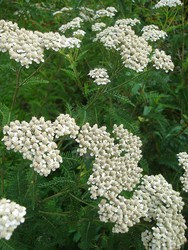


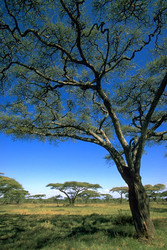
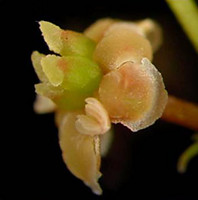
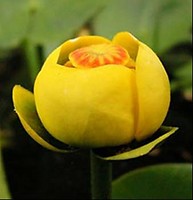
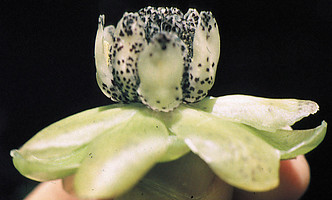

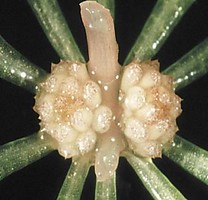
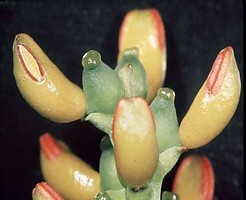
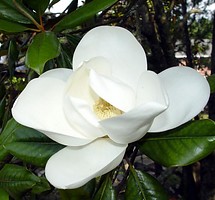






 Go to quick links
Go to quick search
Go to navigation for this section of the ToL site
Go to detailed links for the ToL site
Go to quick links
Go to quick search
Go to navigation for this section of the ToL site
Go to detailed links for the ToL site